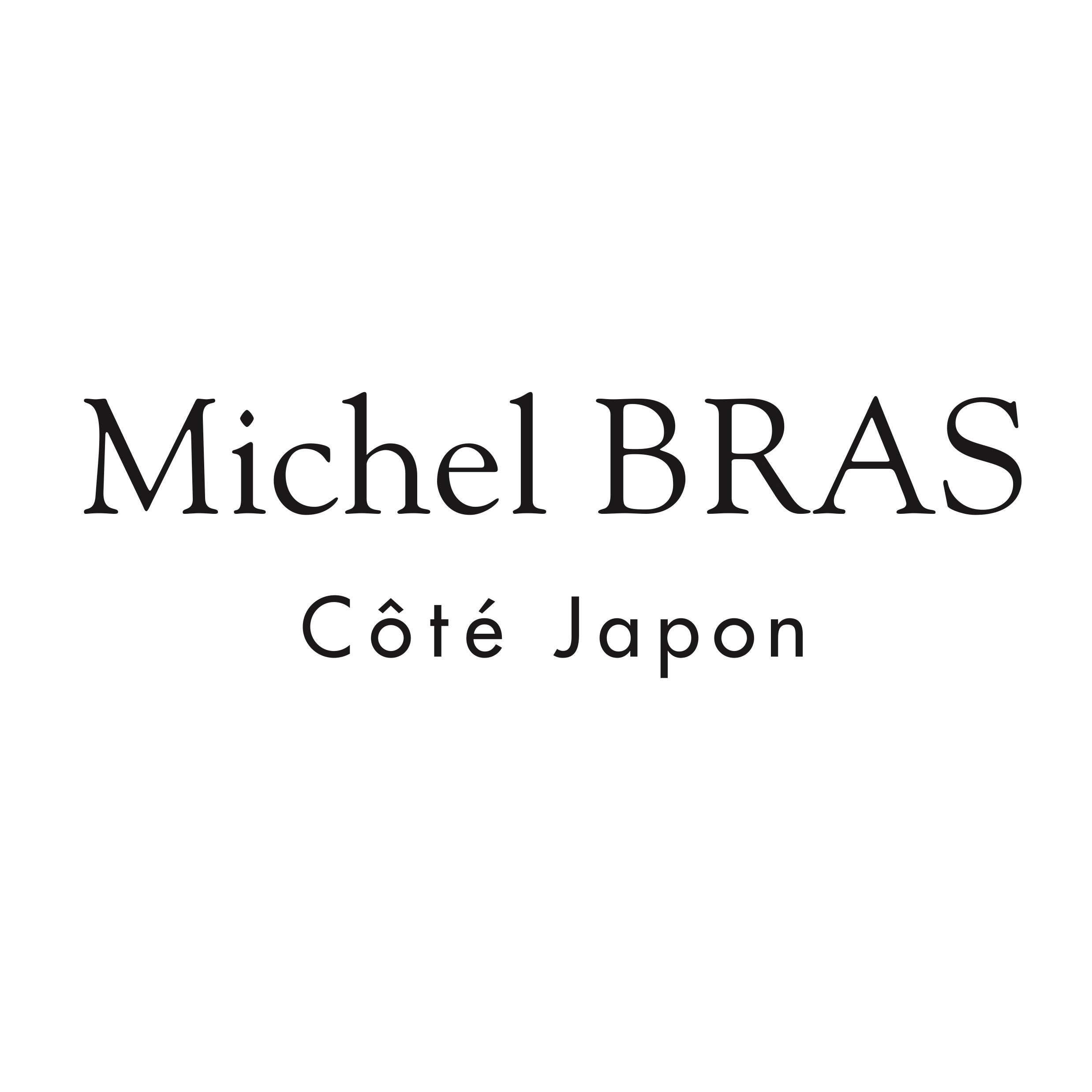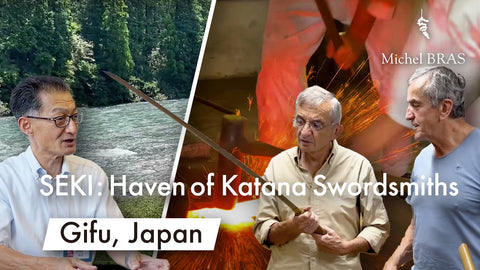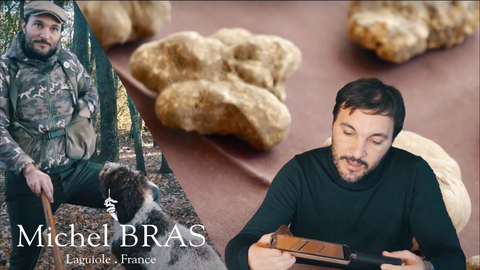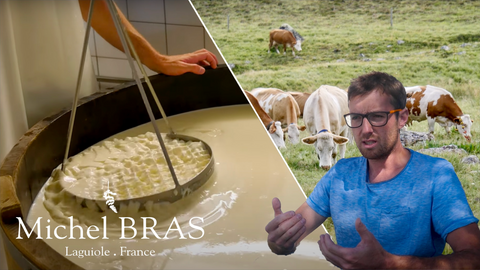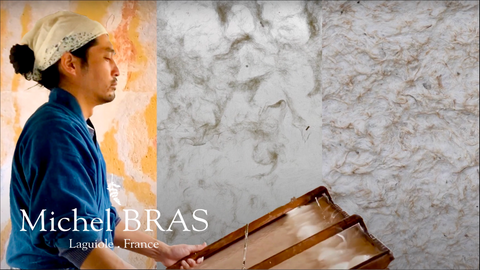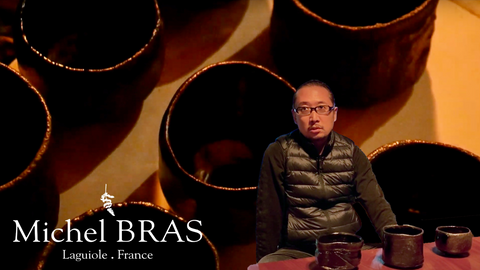The Michel BRAS brand manufacturer KAI Group was founded in 1908 in Seki, Gifu Prefecture. Seki is a cutlery town with a 700-year history of Japanese sword production. The whole town has been sharpening knives since ancient times and is still sharpening knives today. The Mino region, where Seki is located, has a 1,300-year history of producing Mino washi paper and ceramics. It is one of Japan's three largest producers of washi paper and the largest producer of ceramics in Japan. It is one of the most concentrated regions in Japan with a rich history and culture of crafts handed down to the present day.
The Savini family business has always been tightly linked with truffles in Tuscany. It is a passion that began in the early 1920’s and that has been transmitted over four generations. Today, they still gather fresh truffles every season just like they used to, and they personally follow each step of the production cycle, from the gathering of the truffles to the selection process, from the cleaning to the creation of products and from the packaging to the sales and delivery.
Cheese production in Aubrac region dates back to Antiquity. In the 12th century, monks founded the Dômerie monastery in Aubrac village, initiating cow herding along with making a hard type cheese that would later become the Laguiole. Named after the eponymous village, its complex flavor is popular among French gourmet. Early stage Laguiole cheese known as tome fraîche, is the main ingredient to prepare aligot, a tasty local dish made with potatoes. It also has a smooth elastic texture that stretches endlessly. Maison Bras has been serving this aligot as a side to the main course since the early days, as a tribute to Aubrac culture.
Takanori Senda, a paper craftsman and Japanese paper artist living in Mino City, Gifu Prefecture. He works in a papermaking village called Warabi in Mino City. Here, he is simply continuing the act of creation. Expose the act of creation. Dirty things, beautiful things. Sometimes it's a fine line. Because people are with nature, they just expose themselves without any reason. Experience the world of Japanese paper, where nature's bounty and human activity interweave. That's one way nature and humans re-merge. From the kozo fields to the hand-made washi paper, there are the pure water that springs from the mountains, the 1,300-year-old technique of Mino hand-made washi paper, and the kozo stalks that are harvested and sprouted and grown and harvested every year. The earth that nurtures All of that is essential. Steamed and boiled, the trees become ash, and the ash is used in the simmering, the power of the fire to keep it going. Paper is created through interaction, interaction, and interaction between nature and people. Papermaking is a job that has lived close to nature. Through this work, people and nature get along well, and it is an opportunity to live comfortably. The history of paper-making will continue into the future. Takanori Senda would like to convey the voice of the mountains so that the paper-making village can continue to exist.
Mino Washi’s history began about 1300 years ago. Mino was a suitable land for the production of Washi because it has an abundant supply of “raw materials” and “quality cold water” necessary for the production of Washi, and it was close to the capital. In the Edo period, Mino Washi was recognized as a paper for the shogunate, and the town of Mino has flourished as a production area for Washi. Washi made in Mino is not only the quality of paper that is thin and sturdy, but also its elegant color and durability, and its beauty when seeing through to sunlight, its texture hasn’t changed between now and the past.
Kobeigama was founded in 1800 by Kobei Kato I in Ichinokura-go, Mino province, and quickly became the official kiln for supplying tinted tableware to the Edo Honmaru and Nishi Gomaru castles. Koubei V (1893-1982), who succeeded Koubei V (1893-1982), the second generation who produced elegant and exquisite underglaze blue porcelain, Koubei III who devoted himself to the study of Xuande Chinese underglaze blue, and Koubei IV who was a master of his art, created numerous masterpieces using a wide range of techniques, from Chinese ceramics such as celadon, gold brocade, underglaze blue, red glaze and tenmoku to ceramics from the Qianshan and Li dynasties, and laid the foundations for the Koubei kiln. The foundations of the Koubei kilns were laid.
Takuo Kato VI (1917-2005), after years of research, restored the techniques of Persian ceramics and Shosoin three-colour painting and produced a fusion of tradition and originality, including lustre objects, blue glazes, three-colour painting and Persian colour painting. These achievements have earned him recognition as a living national treasure.
The current head of the family, Kato Koubei VII, is active in a wide range of styles, including his own contemporary style, Momoyama ceramics and Persian ceramics. Under the direction of Koubei VII, the kiln has more than 20 skilled craftsmen who aspire to produce elegant Japanese tableware.
Takuo Kato VI (1917-2005), after years of research, restored the techniques of Persian ceramics and Shosoin three-colour painting and produced a fusion of tradition and originality, including lustre objects, blue glazes, three-colour painting and Persian colour painting. These achievements have earned him recognition as a living national treasure.
The current head of the family, Kato Koubei VII, is active in a wide range of styles, including his own contemporary style, Momoyama ceramics and Persian ceramics. Under the direction of Koubei VII, the kiln has more than 20 skilled craftsmen who aspire to produce elegant Japanese tableware.
